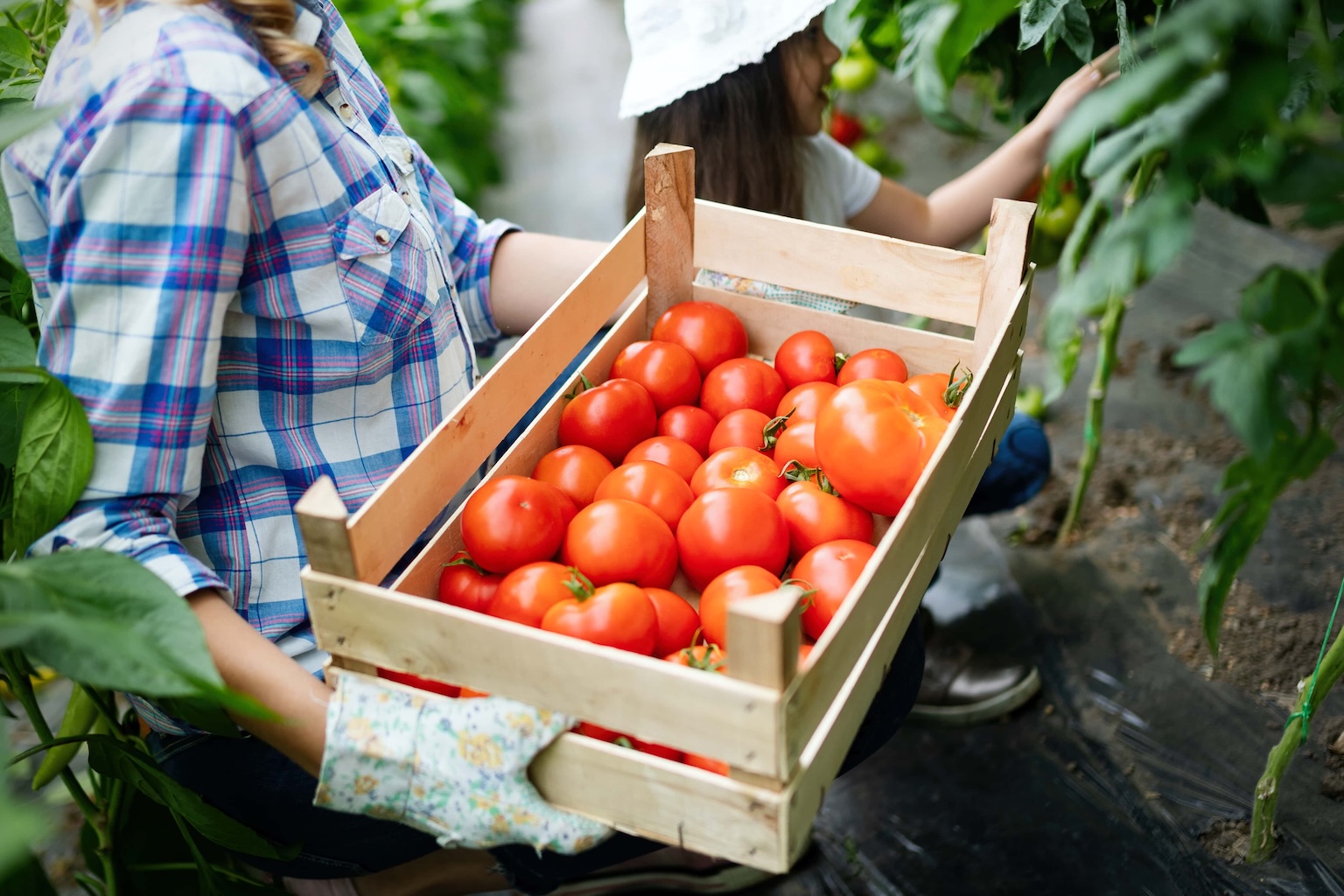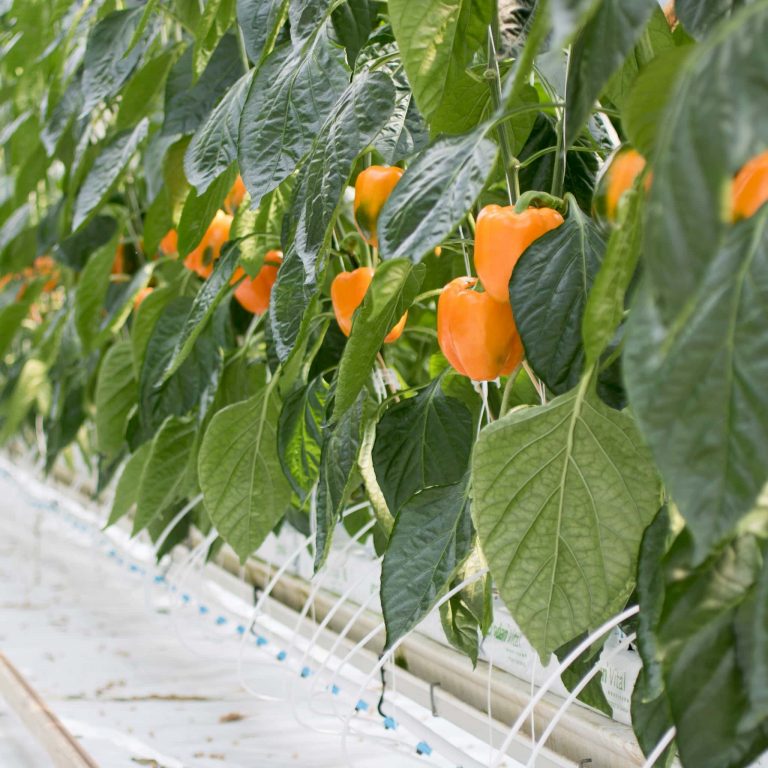Greenhouse growing does more than just produce fresh, high-quality food—it serves as a catalyst for business growth, creating opportunities beyond the Greenhouse in sectors such as retail, logistics, technology, and hospitality. The economic impact of greenhouse growing is significant. As the demand for sustainable, year-round agriculture increases, Greenhouse operations drive economic development by supporting supply chains, stimulating entrepreneurship, and fostering innovation.
From Greenhouse-to-table restaurants to equipment manufacturing, Greenhouse growing fuels diverse industries, making it a key driver of economic resilience for small towns and urban communities alike.
1. Retail and Grocery Expansion: A Steady Supply of Fresh Produce
One of the biggest benefits of Greenhouse growing is its year-round production of fresh, Greenhouse grown vegetables, which creates new opportunities in retail and grocery industries. Unlike seasonal field farming, Greenhouses provide consistent inventory, ensuring that businesses always have access to fresh, high-quality produce.
- Grocery Stores & Supermarkets – Grocers benefit from a steady supply of Greenhouse grown produce, ensuring fresher products for consumers.
- Health Food & Organic Stores – Many Greenhouses focus on pesticide-free or organic practices, making them ideal suppliers for specialty health stores looking for premium produce.
By ensuring a consistent flow of fresh food, Greenhouses create long-term opportunities for retailers and strengthen regional food supply chains.
2. Logistics and Distribution: Strengthening Supply Chains
The rise of Greenhouse agriculture has increased demand for transportation, packaging, and distribution services, creating job opportunities and business growth in logistics.
- Cold Storage Facilities – Greenhouse grown produce requires temperature-controlled storage, leading to investments in refrigeration services and warehouse space.
- Trucking and Delivery Services – With year-round production, Greenhouses provide steady work for trucking companies and last-mile delivery services transporting produce to retailers, restaurants, and wholesalers.
- Eco-Friendly Packaging – The demand for sustainable, biodegradable packaging for Greenhouse produce has fueled innovation in packaging design, supporting manufacturers specializing in compostable or recyclable materials.
These logistics and supply chain industries thrive as Greenhouses expand, creating essential support systems for the agricultural sector.
3. Restaurants and Food Service: Fueling the Greenhouse-to-Table Movement
Greenhouses are a game-changer for the restaurant industry, enabling chefs to source Greenhouse grown, high-quality ingredients year-round.
- Greenhouse-to-Table Restaurants – With a reliable supply of fresh vegetables, restaurants can create seasonal menus that showcase flavors, reducing reliance on imported ingredients.
- Meal Prep & Catering Services – Healthy meal prep businesses and caterers benefit from consistent, high-quality produce, allowing them to scale operations without ingredient shortages.
- Juice Bars & Health-Focused Cafés – The demand for fresh, antioxidant-rich produce has led to a surge in juice bars and plant-based cafés, many of which rely on Greenhouse grown peppers, tomatoes, and cucumbers.
Greenhouse growing provides chefs, caterers, and food entrepreneurs with the ability to plan menus confidently without worrying about seasonal supply disruptions.
4. Equipment Manufacturing and Maintenance: Innovation in AgTech
With the rise of Greenhouse growing technology, there is an increasing need for specialized equipment and skilled workers to build, maintain, and improve Greenhouse infrastructure.
- Hydroponic & Vertical Growing Equipment – Many Greenhouses utilize hydroponic and aeroponic systems, driving demand for customized growing trays, LED lighting, and climate control technology.
- Irrigation System Providers – Advanced drip irrigation and water recycling systems are essential for Greenhouse efficiency, creating opportunities for irrigation specialists and equipment suppliers.
These technological advancements ensure that Greenhouse growing continues to create high-tech job opportunities and drive innovation in agriculture.
5. Community-Based Education and Tourism: Engaging the Public
Greenhouse growing has also opened new doors in education, tourism, and public engagement, attracting visitors and inspiring future generations of growers.
- School & University Partnerships – Many Greenhouses collaborate with schools and universities to teach students about sustainable agriculture, hydroponics, and climate-friendly growing.
- Agri-Tourism & Greenhouse Tours – Some Greenhouses offer tours, workshops, and hands-on learning experiences, allowing visitors to see innovative growing techniques in action.
By integrating education and public engagement, Greenhouses foster a deeper appreciation for sustainable agriculture while creating economic opportunities through tourism and training programs.
The Economic Ripple Effect: Greenhouses as Business Hubs
Greenhouse growing is more than just agriculture—it is a business engine that fuels multiple industries. By supporting retailers, transport companies, restaurants, technology firms, and tourism sectors, Greenhouse growing strengthens economies.
Why Greenhouse Growing Supports Business Growth
- Expands grocery and retail opportunities with year-round fresh produce.
- Strengthens supply chains by increasing demand for logistics, storage, and packaging.
- Drives restaurant and food service innovation, fueling Greenhouse-to-table dining.
- Boosts ag-tech development with high-tech equipment and automation advancements.
- Promotes education and tourism, encouraging public engagement in sustainable agriculture.
As the global food industry evolves, Greenhouse growing is set to become a cornerstone of economic sustainability, providing jobs, innovation, and food security for future generations.




